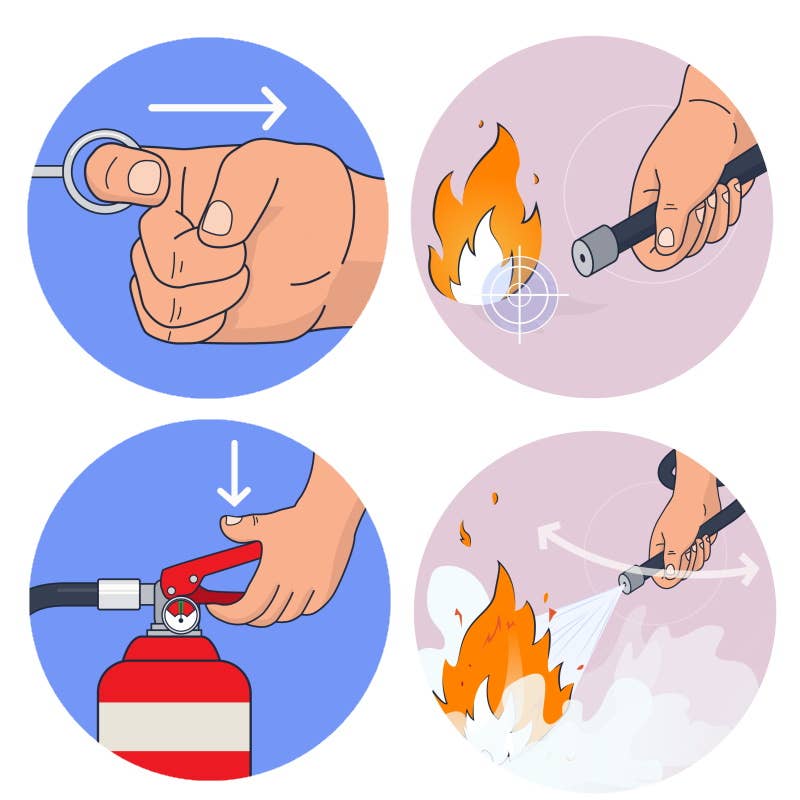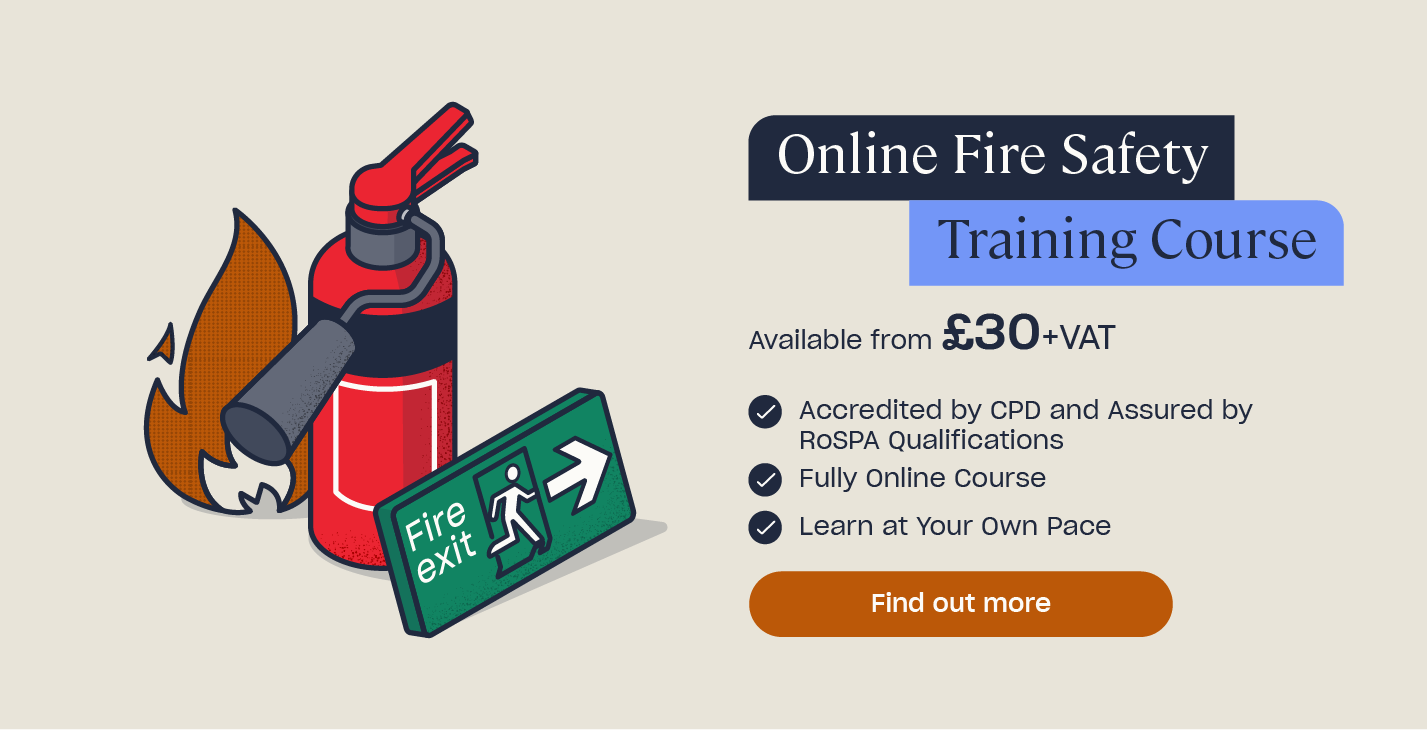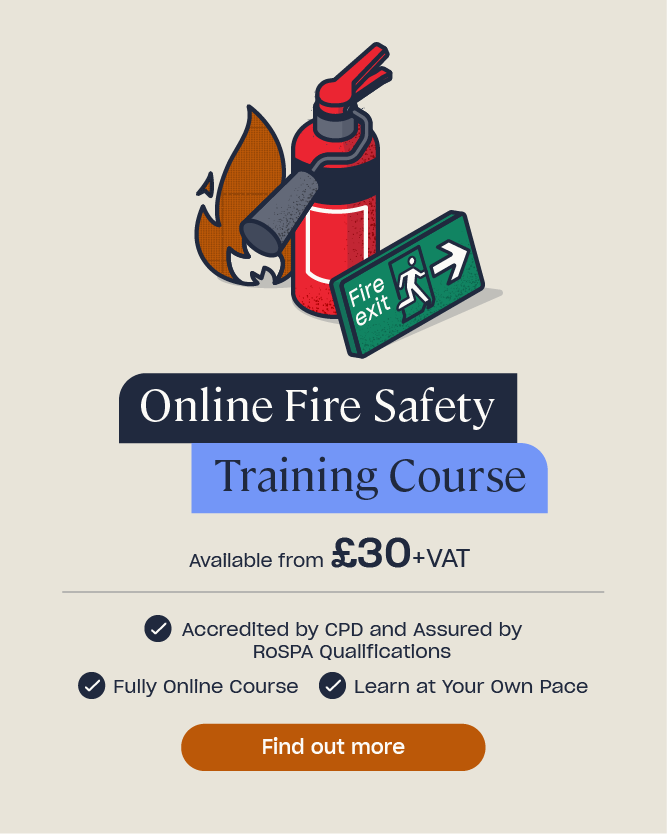What Does PASS Stand For? Fire Extinguisher Use and Safety
Fire safety in the workplace and at home involves a variety of aspects, meaning you cannot just rely on fire extinguishers. However, they do play an important part in fire safety measures. Extinguishers can be effective for small fires and preventing them from getting out of control, but in order to be effective, you must have an understanding of how to use them correctly and safely. Using extinguishers correctly ensures that you don’t make the situation worse and put yourself and others at risk.
In this article, we’ll look at the proper basic technique for using extinguishers. This is known as the PASS technique – pull, aim, squeeze, and sweep. Knowing this technique will help you to react quickly and confidently if the situation calls for it. We’ll also explain other important aspects of using extinguishers that you should be aware of in addition to PASS, as it is just one part of using fire extinguishers safely.
Looking to learn more?
Our Fire Extinguisher training course teaches you about the various types of fire extinguishers that may be present in your workplace and how to use them effectively.
What is PASS for Fire Extinguishers?
PASS is the acronym used to remember the four basic steps for using a fire extinguisher. Some extinguishers have their own specific techniques, but PASS is the basis for using all types of extinguishers, regardless of any additional specific requirements.
PASS stands for:
- Pull – pull out the pin from the extinguisher, which will allow you to use the trigger. This may sometimes require a twisting action as well as pulling.
- Aim – aim the extinguisher’s hose at the fire. The way in which you aim may differ depending on the type of extinguisher.
- Squeeze – firmly squeeze the trigger to discharge the contents of the extinguisher. You should discharge the extinguisher’s entire contents.
- Sweep – sweep the hose of the extinguisher over the fire to evenly discharge the contents. The particular way in which you sweep may differ depending on the type of extinguisher. Some require a rapid sweeping motion while others require gentle sweeping.

Those who are nominated by their employers to use fire extinguishers and other firefighting equipment should familiarise themselves with the PASS technique.
Using the PASS fire extinguisher technique will ensure you’re taking the necessary basic steps to prepare the extinguisher for use and to tackle the fire correctly and safely.
Note, however, that PASS is only one small part of using fire extinguishers.
It’s important to understand the difference between the various types of extinguishers and their own individual techniques.
Likewise, it’s vital to know how to assess the situation to determine whether or not it’s actually safe to try fight the fire. For example, you may be fully confident in using an extinguisher, but if the incorrect type is present for the class of fire that you’re facing, or the fire is too large to combat with an extinguisher, then it would not be safe to attempt to fight it. This requires you to think quickly and critically in any given fire emergency.

Furthermore, your ability to escape should always take priority. While your confidence in using extinguishers safely could enable you to put out a small fire and prevent a serious incident, there are many situations where it won’t be safe to fight the fire. You should always put the safety of yourself and others first.
It’s therefore important for you to receive training that provides a well-rounded understanding of how to use fire extinguishers and how to assess fire emergency situations. You should also receive practical training, so you have the opportunity to practise physically holding and using fire extinguishers. You should not attempt to use extinguishers if you haven’t received practical training.
Remember: in a fire emergency, making a quick but most importantly safe decision is vital. Having the necessary information, instruction, and training will ensure you can do so, with PASS forming one part of this wider understanding.
Further Resources:
- Online Fire Extinguisher Training Course
- Online Fire Safety Training Course
- Online Fire Warden Training Course
- Fire Door Safety: What are the Requirements?
- Fire Risk Assessment Quiz
- Fire Warden Quiz
- Fire Extinguisher Quiz
- Fire Safety Quiz









